Top 10 crashes in Formula One history
F1 over the years has witnessed some of the most brutal in-race accidents in the world of motorsports.
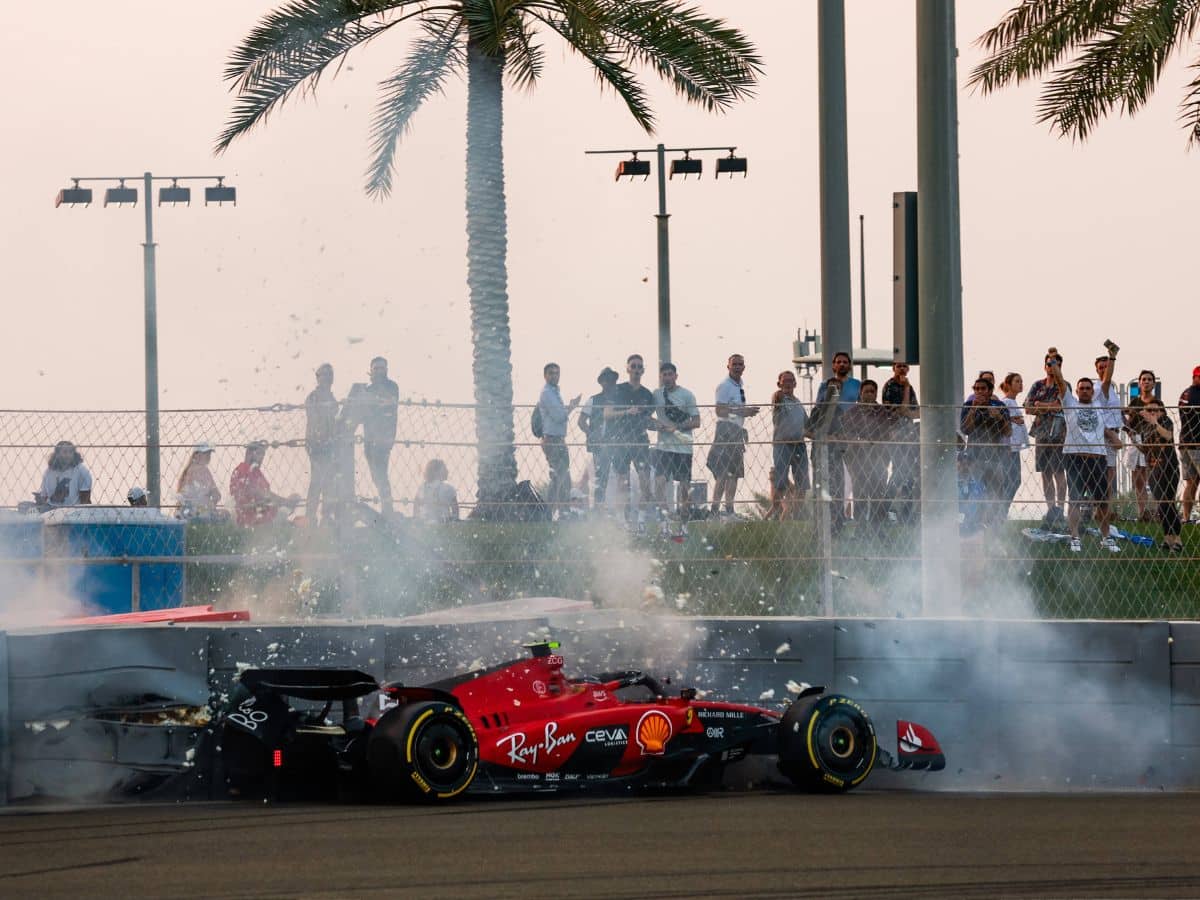
F1 car crash (via IMAGO)
🔍 Explore this post with:
Formula One is often viewed by many of its fans as just a racing sport that involves professional drivers traveling to exotic locations all around the world to race for billion-dollar teams. But what often evades most of us is that these racers place massive bets on their lives every time they enter the racing circuit to take part in the Grand Prix because of their danger factor.
At every single twist and turn of the circuits lies a new maze that, if the racers fail to solve properly, can cause them harm. Sometimes, it is seen that the drivers, who are, at the end of the day, humans, fall prey to some mistakes and ram into the other cars or crash into the sidewalls.
The glorious history of F1 is marred by several incidents where on-track accidents of massive magnitudes have led to the deaths of the racers, the circuit crew, and the audience. And in some other instances, like in the case of Romain Grosjean in 2020, the F1 nation has seen heroic rescues being made where human life triumphed above the awful dangers of the F1 circuits.
Let’s explore some of the most dangerous accidents that have happened in Formula 1 over the ages, with 5 of them being from the pre-2000s era and 5 from the 2000s era.
Top-5 crashes Pre-2000s
1961 Italian GP
Ferrari racer Wolfgang von Trips, or ‘Taffy’ as he was called by his racing colleagues, stepped into the 1961 Italian GP with huge hopes of winning that year’s World Championship. He got into a tough fight for the coveted title against his teammate Phil Hill. Von Trips’ Ferrari ran into the Lotus of Jim Clark and was airborne for a moment.
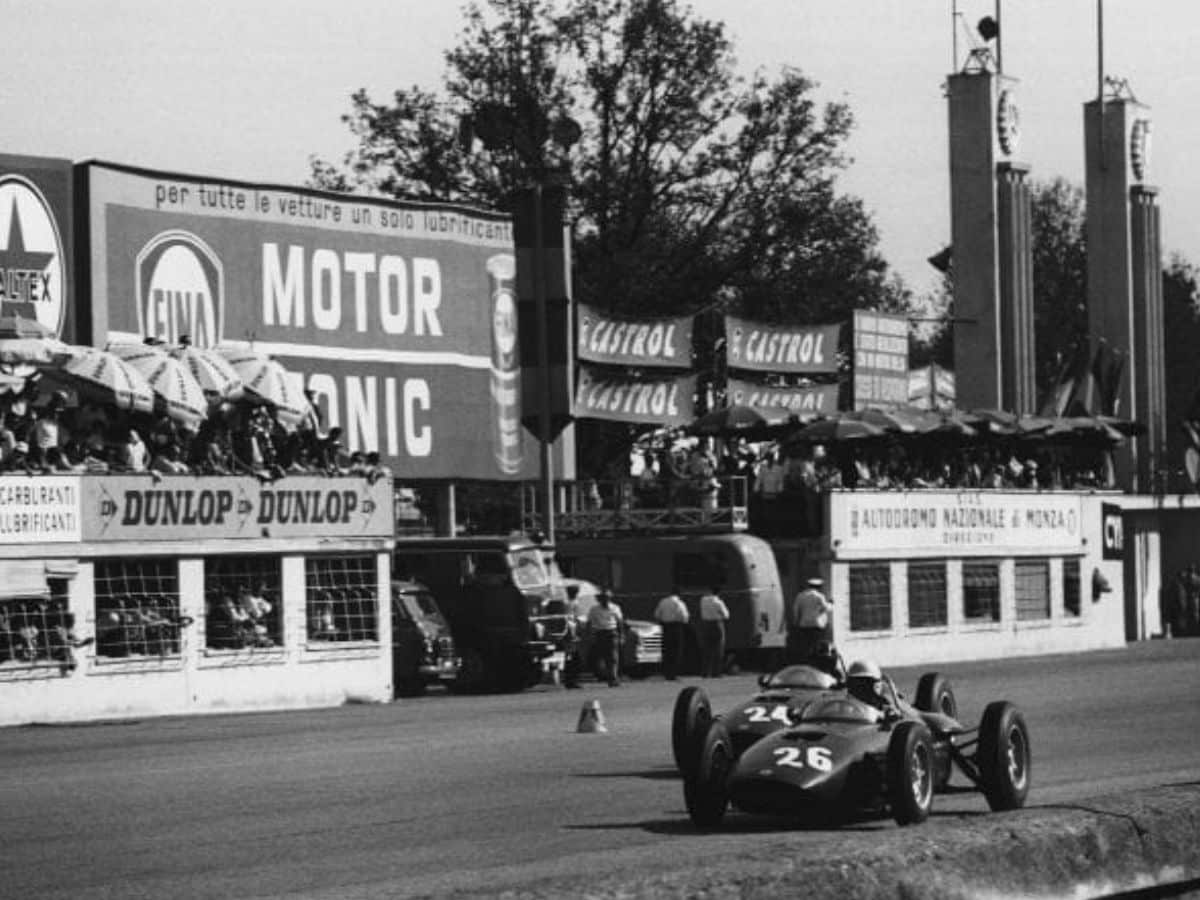
As the car came down, it crashed into one of the side barriers at Monza. The incident killed 14 spectators who were seated in the front rows, too close to the sidewalls, and von Trips did not survive the impact either. Taffy thus ended his 1961 campaign as the 2nd driver in the World Championship Standings.
1970 Monza GP
During the 1970 Monza Grand Prix weekend, Jochen Rindt met a terrible end to his fate at the practice session ahead of the Main Race. His fatal accident made him the only racer to be awarded the title of an F1 World Champion posthumously. Rindt’s crash, caused by brake shaft failure, led to his seat belt eventually almost decapitating him.
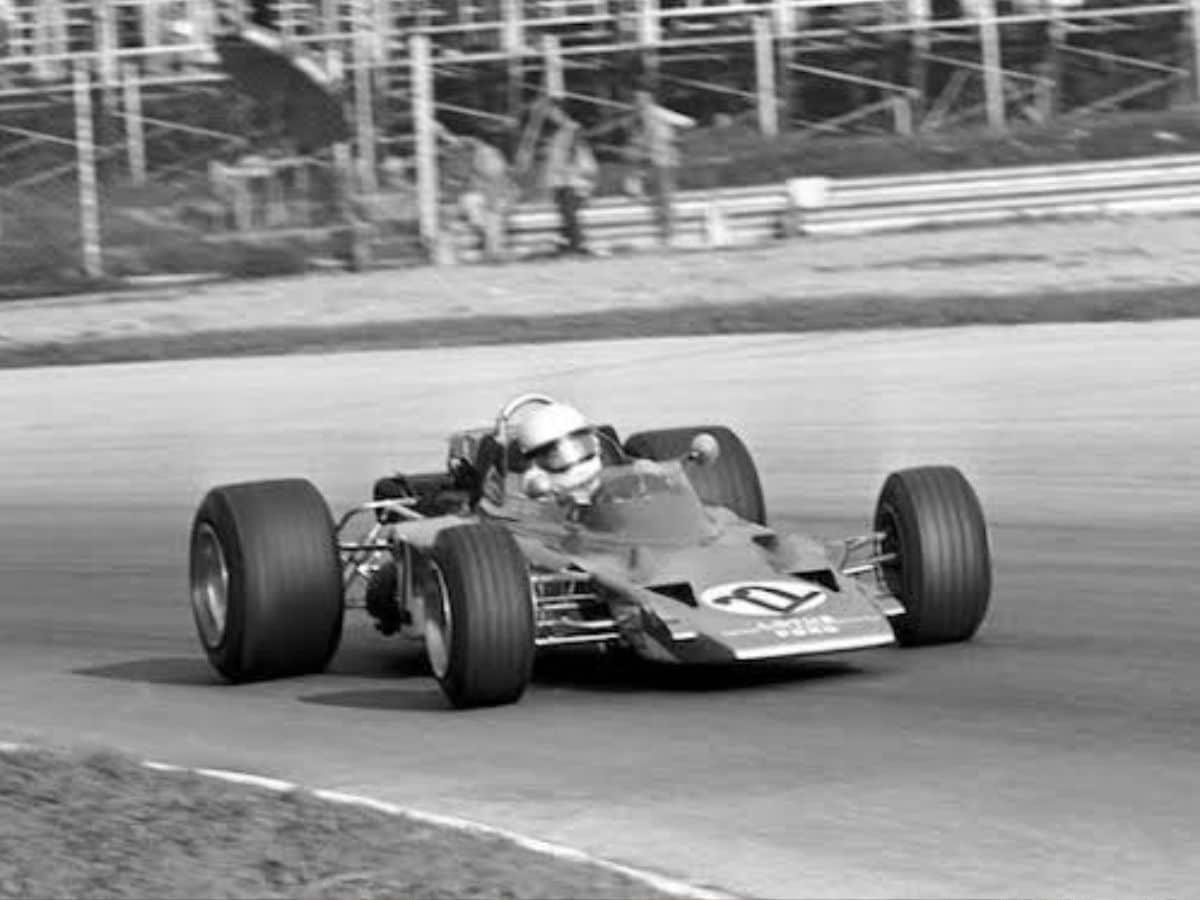
He still hung on to dear life when he was being transferred to a hospital for medical care. But he was announced dead upon arrival due to severe throat injuries caused by the fateful seat belt that killed him.
1975 Montjuïc Park Grand Prix
The Spanish GP is being rumored to shift to Madrid after being held at the Circuit de Barcelona-Catalunya for many years. But before Barcelona, the race was held at another track in the same country–the Montjuïc Park circuit. In 1975, the Montjuïc Park circuit seemed quite an impossible track to race on for two-time F1 World Champion Emerson Fittipaldi. He withdrew his name from the race because he wanted to put his life first but the Grand Prix went on nonetheless.
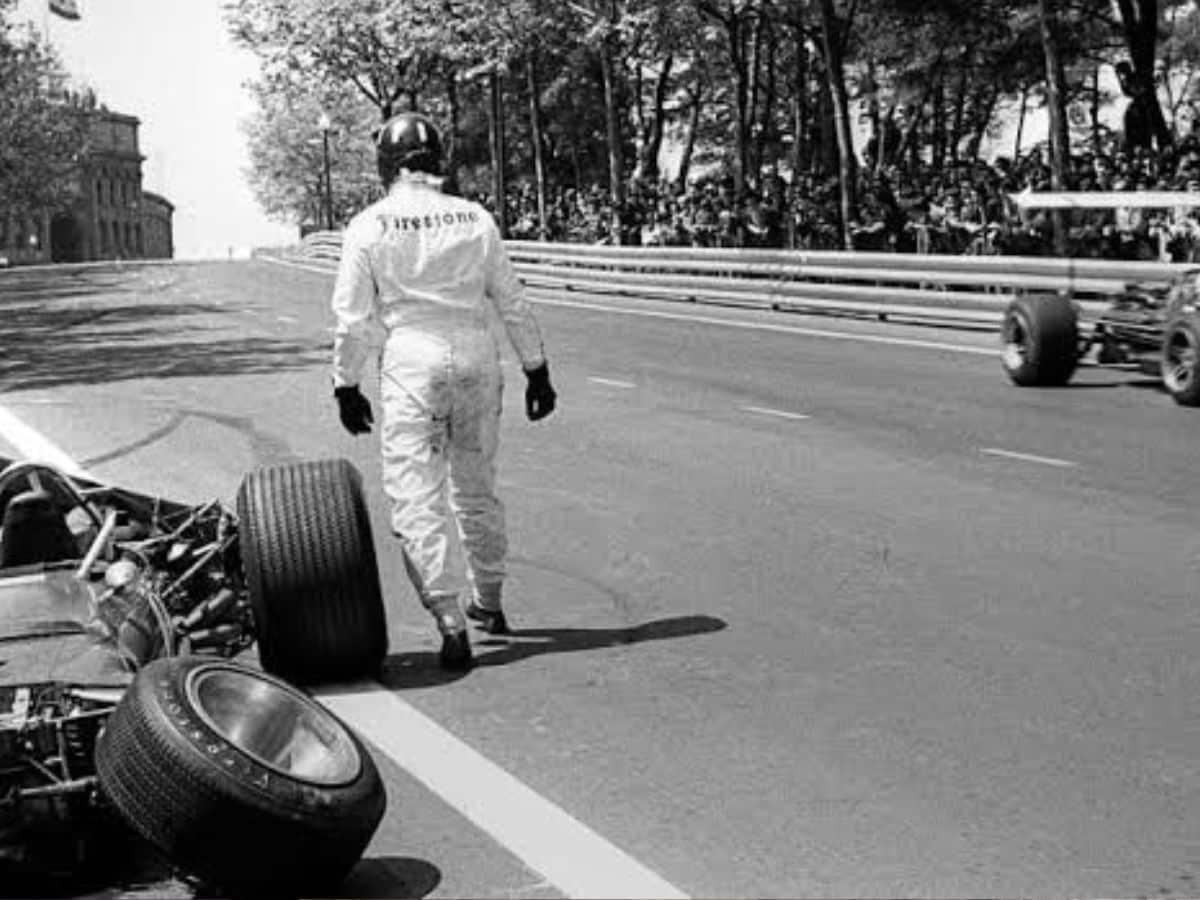
Only about half an hour later, Fittipaldi’s warnings came true as it was seen that Brabham racer Rolf Stommelen ran into 4 people on the track at lap 26. It led to the race being cut short as all the drivers were awarded half the allotted points. Stommelen survived the accident but he was later killed in another crash in the United States during the Los Angeles Times Grand Prix.
1982 Belgian GP
The venue that holds the Canadian GP is named after famed racer Gilles Villeneuve who lost his life at the Qualifying for the 1982 Belgian GP. Villeneuve was caught up in a personal battle against teammate Didler Pironi who had recorded a lap time 0.1 s less than Villeneuve’s. As the Canadian attempted to better his timings, his Ferrari collided with Jochen Maas’ March.
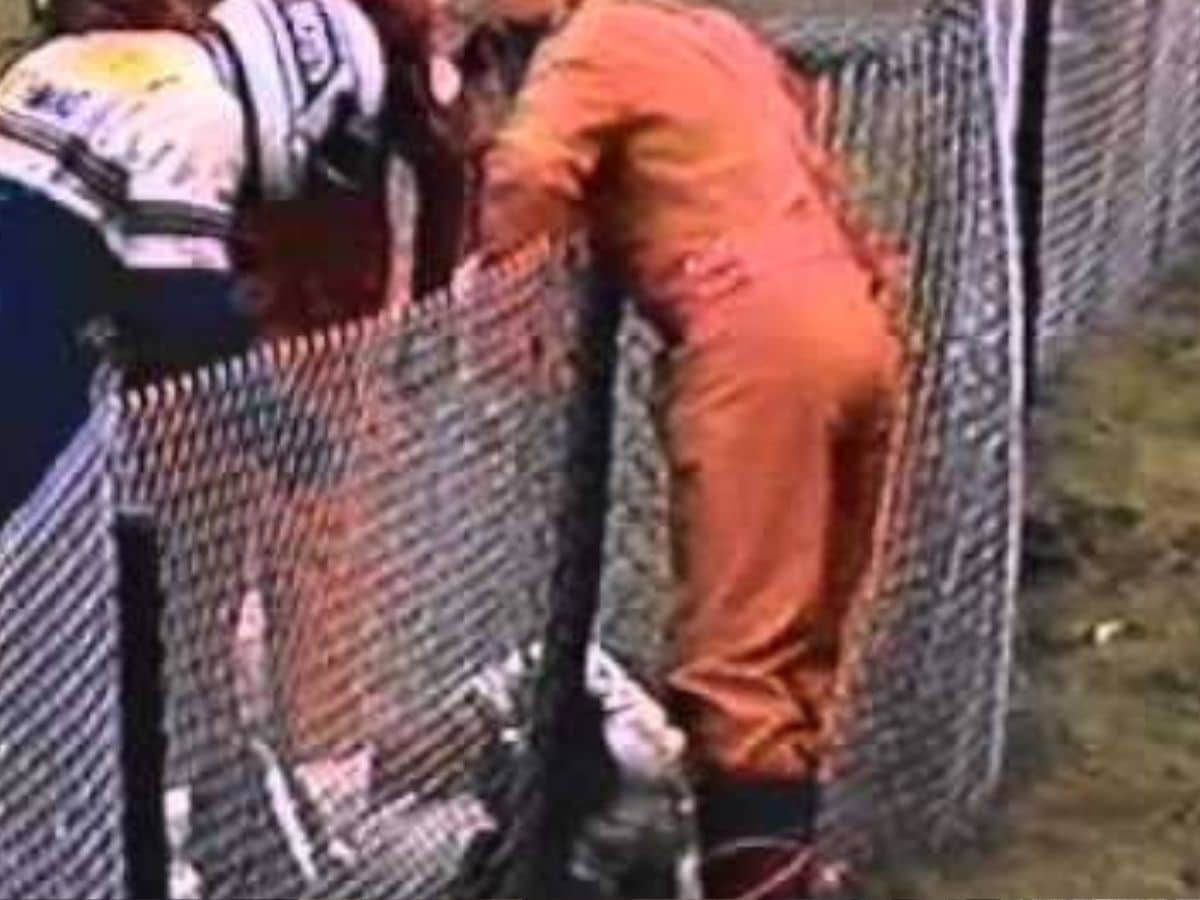
The Ferrari was airborne for a moment and hurtled back to the ground. Gilles Villeneuve’s helmet came off due to the somersaults. And he suffered a huge impact as he was thrown 50 meters from his car. He was announced dead on the spot.
1994 San Marino GP
While the Italian GP in Monza has already been mentioned, another Italian race has made it into the list of the topmost dangerous F1 Grands Prix of all time. This one took place at the Imola circuit, and it is called the San Marino GP.
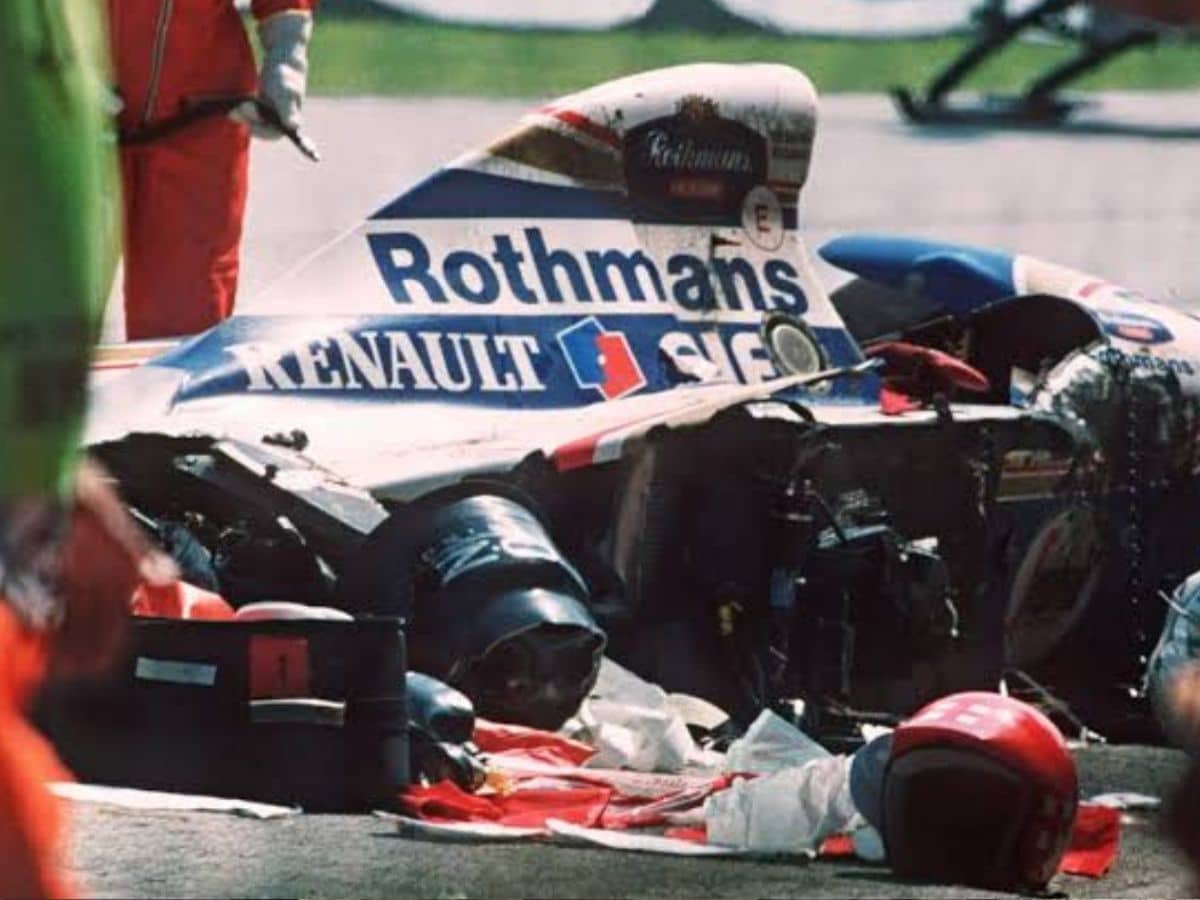
The race weekend in Imola saw two huge incidents that took the lives of Roland Ratzenberger and Lewis Hamilton‘s sporting hero Ayrton Senna. During Qualifying, Ratzenberger was killed due to a car crash and during the Main Race, Senna rammed into the concrete walls by the side of the race track, meeting his quick end.
Top-5 crashes Post-2000s
2010 Abu Dhabi GP
The 2010 Abu Dhabi GP saw Sebastian Vettel lift his first-ever Championship title. However, one of the biggest talking points of the race came during lap 1 when Michael Schumacher spun on the exit of turn 6 trying to pass teammate Nico Rosberg.
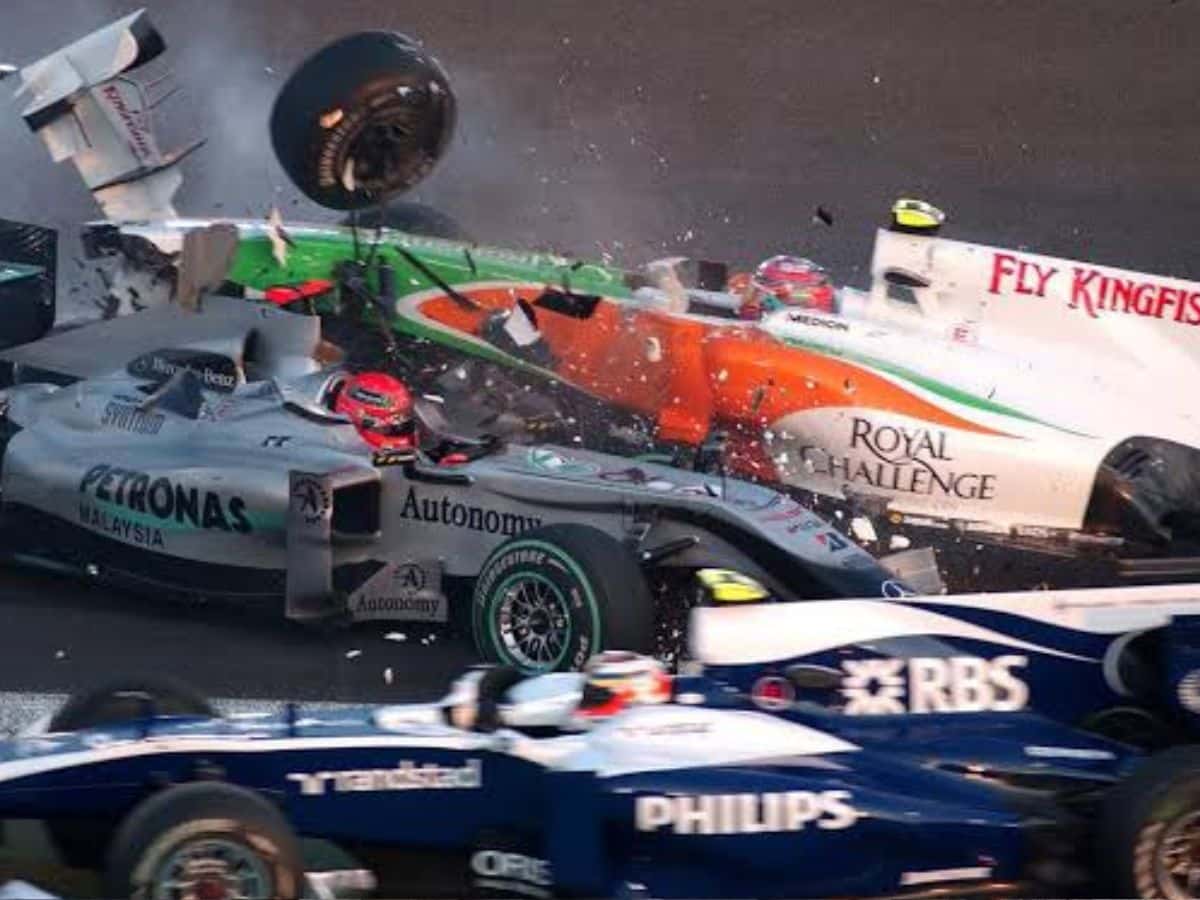
Things went wrong when Vitantonio Liuzzi could not evade the stranded Mercedes and crashed straight into it. Schumacher managed to evade a serious head injury by the thinnest of margins.
2014 Japanese GP
At number 2 comes up the 2014 Japanese GP–one of the darkest GP weekends in recent F1 history. The tragic race at Suzuka International circuit saw Jules Bianchi collide with a tractor on track after losing control of Marussia in a double yellow flag zone.
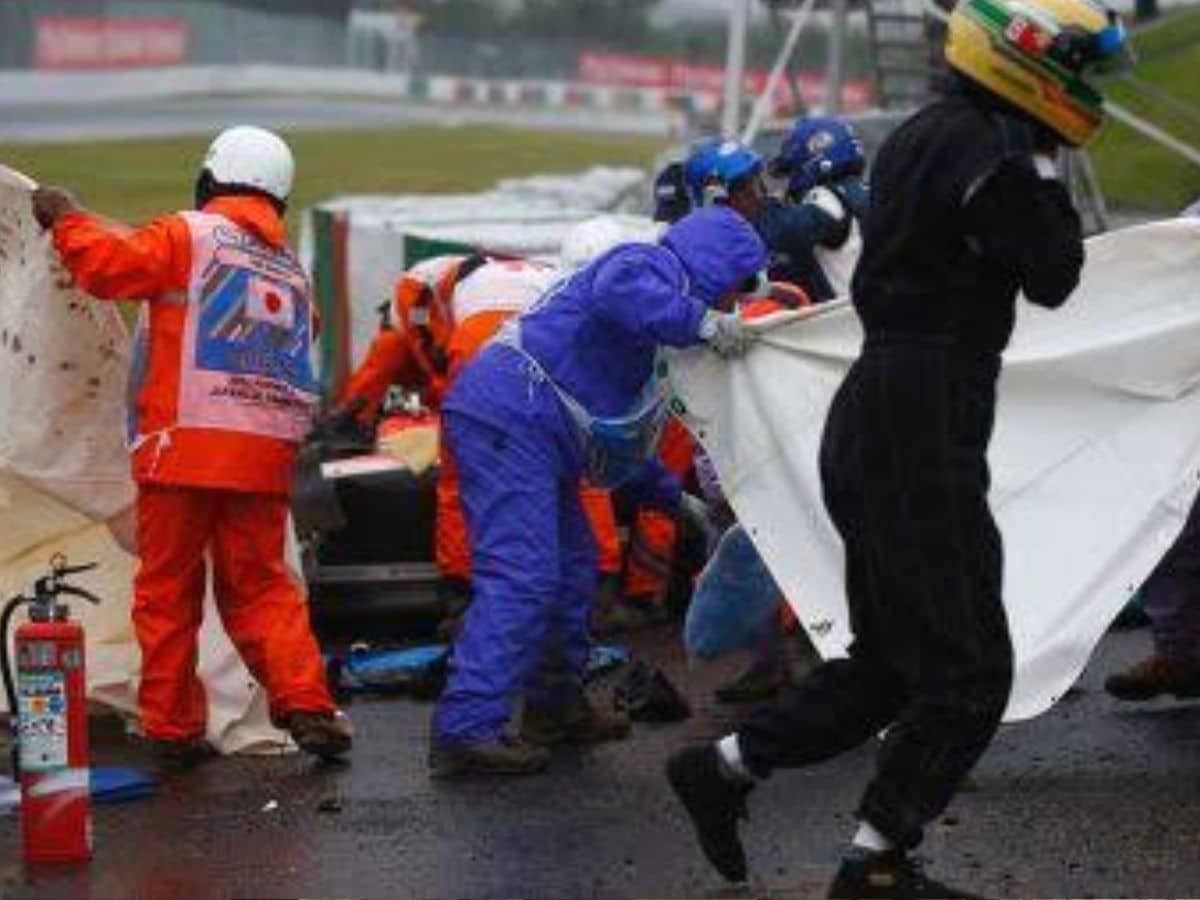
The Marussia took extensive damage and Bianchi was immediately helicoptered off to the nearest hospital where it was declared that he was in an extremely critical condition. After fighting for his life for over 9 months, Bianchi passed away in July 2015 and F1 lost one of its most promising talents at the time.
2020 Bahrain GP
The 2020 Bahrain GP was one of the most memorable races in the last few years, with Romain Grosjean’s heroics making sure that he survived a near-death crash. The Frenchman suffered a horrible crash when his Haas went into the barriers after turn 3. The car split into two and caught fire immediately and fans expected the worst.
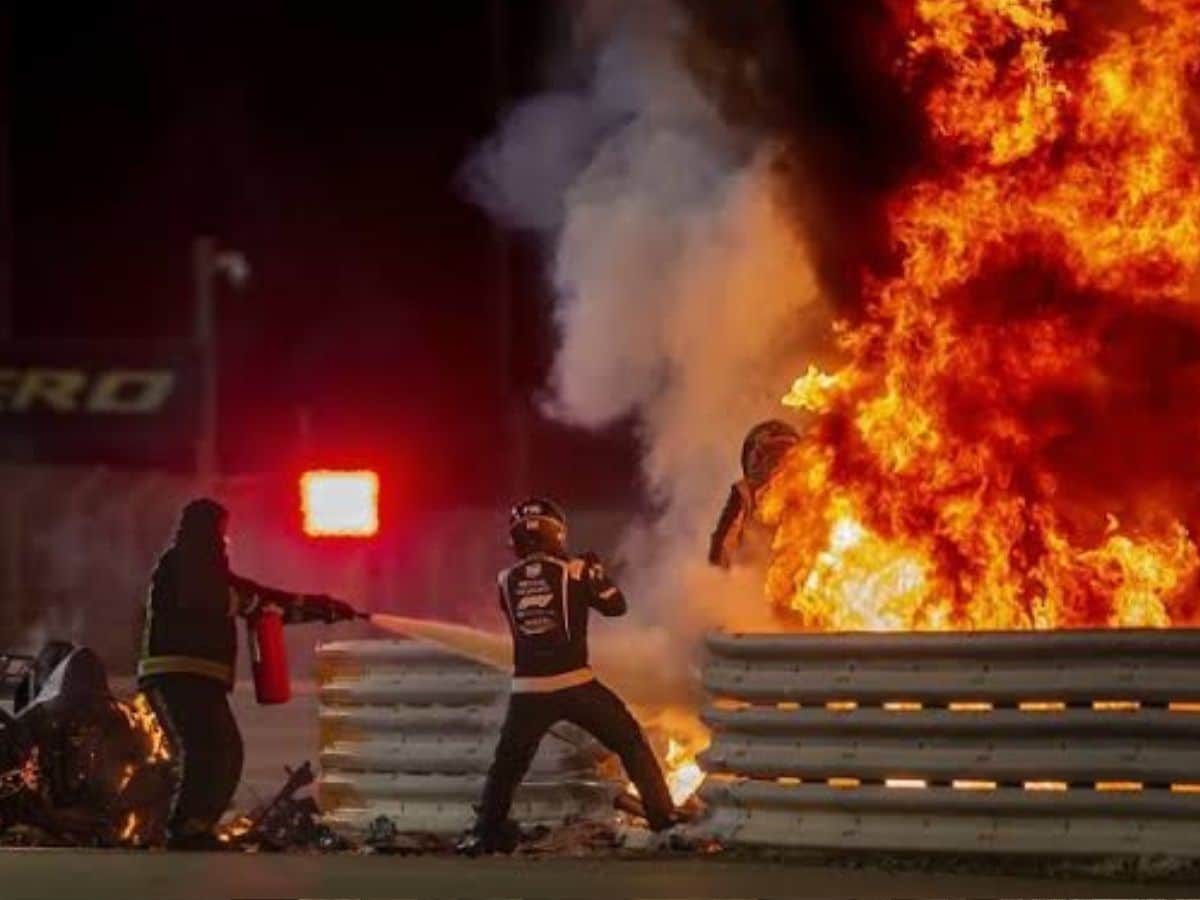
However, after a tense 28 seconds inside the fire, Grosjean soon emerged from the flames, quite like a phoenix, and the F1 world breathed a sigh of relief. The Halo and fireproof suit that had saved Grosjean’s life is a clear example of how far F1 has come in terms of safety.
2016 Australian GP
The 2016 Australian GP saw Fernando Alonso and Esteban Gutierrez involved in one of the most horrific crashes in recent F1 history. Lap 17 of the race saw Alonso run into the back of Gutierrez, which saw the McLaren being lifted into the air at more than 300kmph speeds.
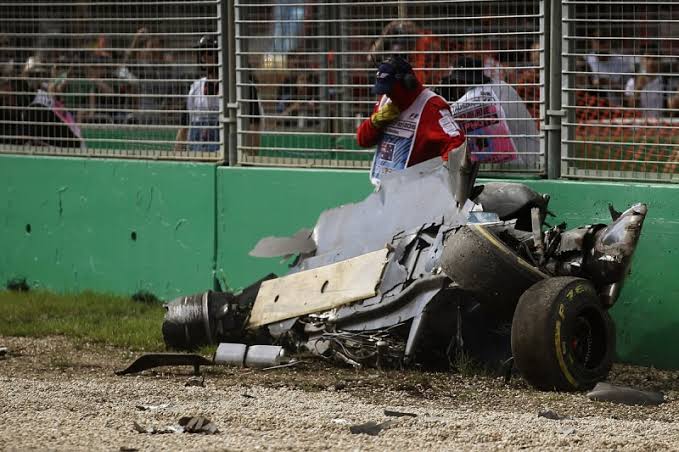
The car barrel rolled thrice before finally resting against the barriers. However, both Alonso and Gutierrez emerged unharmed from the accident, yet another display of the incredible safety levels that F1 has been able to achieve.
2012 Belgian GP
The 2012 Belgian GP featured an incredible five-car collision at turn 1 lap 1, for which, Grosjean would receive a race ban. The whole sequence kicked off when Grosjean made a move into turn 1 and clipped the wheel of Hamilton’s McLaren, which made him lose control and hit Sergio Perez.
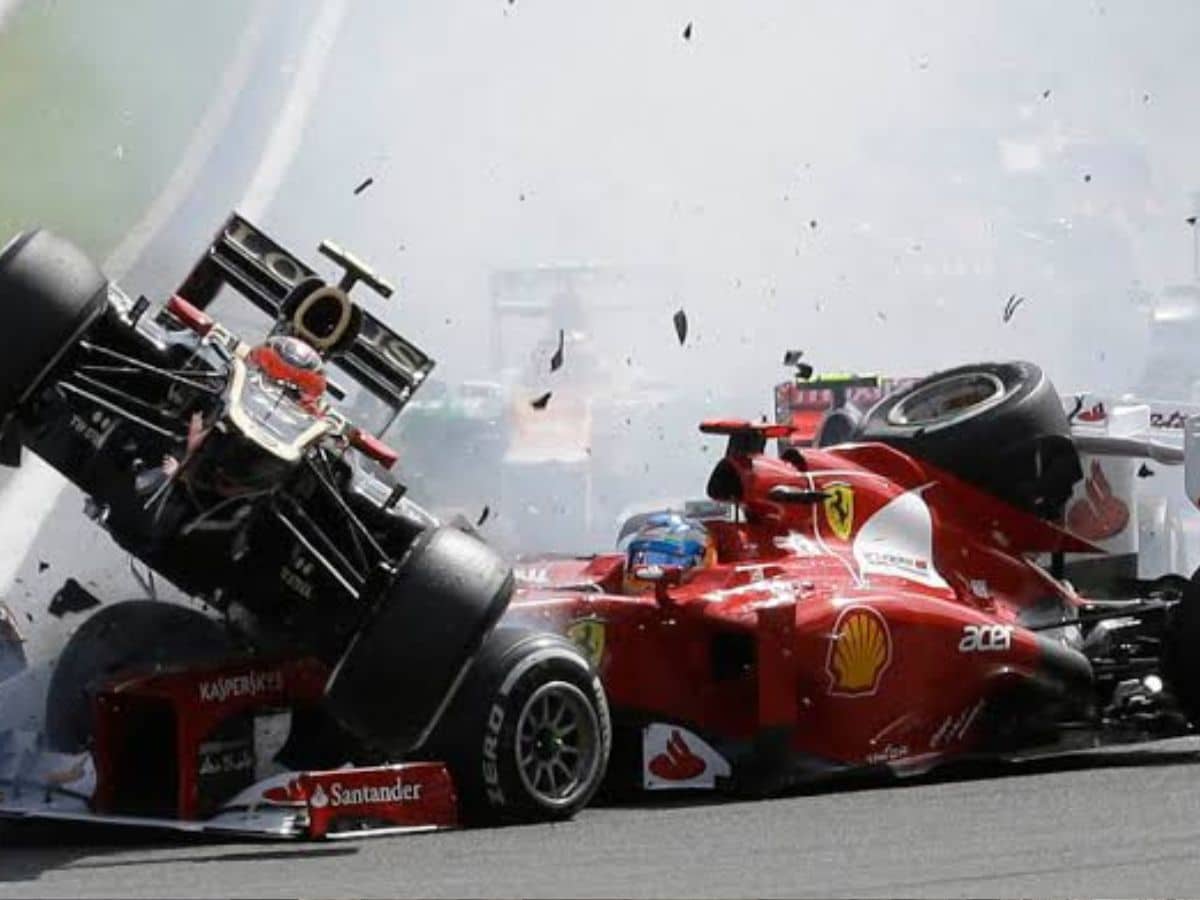
Grosjean became airborne and landed on top of Alonso’s Ferrari. Only Maldonado and Kobayashi managed to continue after the crash, with the other three drivers having to retire.
In case you missed it:

